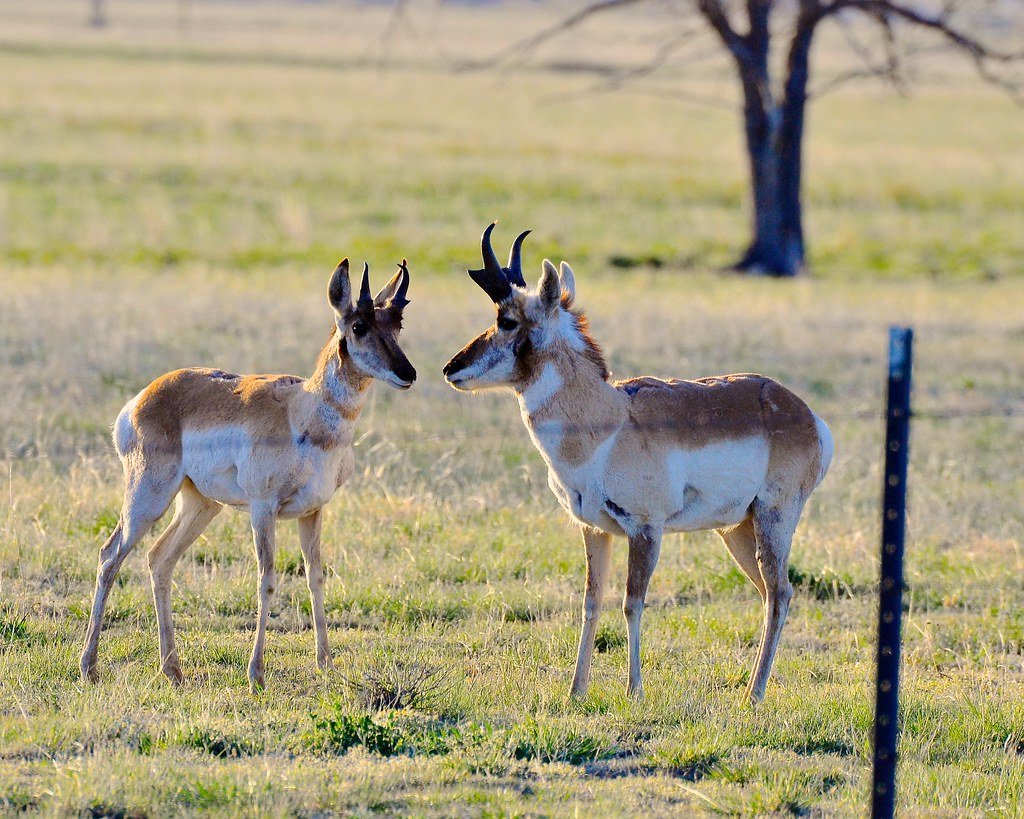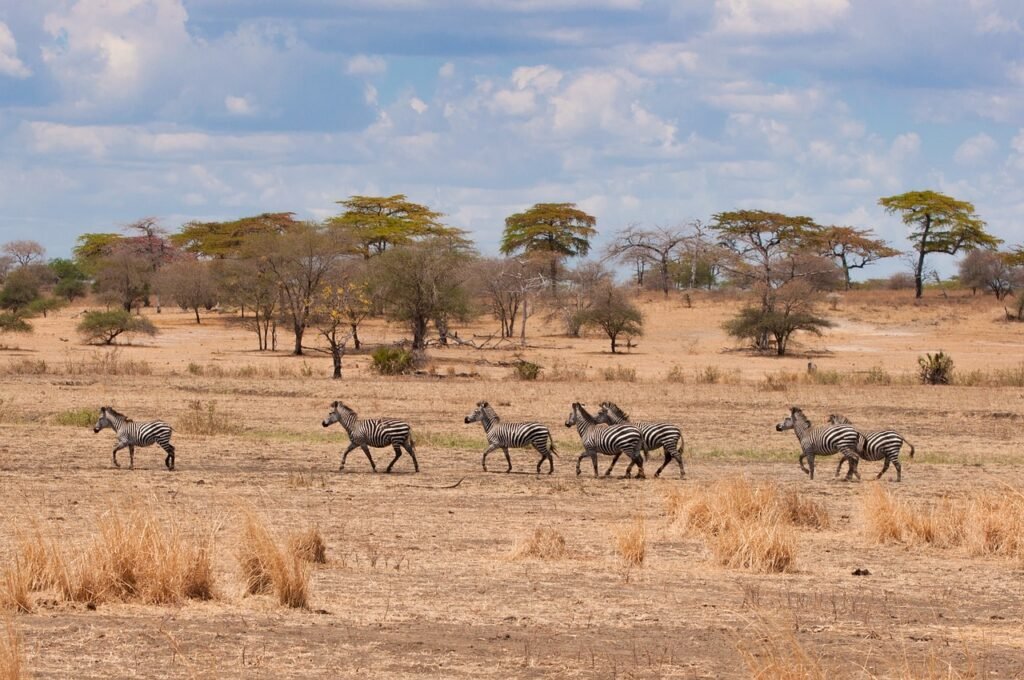New Mexico’s pronghorn population has become one of the most remarkable wildlife conservation success stories in the American Southwest. Picture this: from fewer than 1,700 animals roaming the state’s vast grasslands in 1916 to an estimated 45,000 to 50,000 pronghorn today. This incredible recovery didn’t happen overnight – it’s the result of decades of careful habitat restoration, innovative management strategies, and unprecedented cooperation between agencies, landowners, and conservation groups.
The turnaround is nothing short of extraordinary when you consider that these swift grassland dwellers were once teetering on the brink of disappearing entirely from ‘s landscape. What makes this recovery even more fascinating is how it’s being driven by cutting-edge approaches to habitat restoration that are literally reconnecting fragmented landscapes. So let’s dive into the remarkable story of how the Land of Enchantment became a pronghorn paradise once again.
From Near Extinction to Conservation Triumph

The story of New Mexico’s pronghorn recovery begins with a sobering reality check. In 1916, Aldo Leopold, a state biologist in New Mexico, estimated that there were just over 1,700 pronghorn in the state. Compare that to the millions that once thundered across the Great Plains, and you get a sense of just how close these animals came to vanishing forever.
The decline was catastrophic and swift. Since that time, most anecdotal evidence suggests that the pronghorn population declined precipitously in the century of settlement that followed Long’s expedition. Market hunting and habitat destruction from settlement had decimated herds that European explorers once described as numbering in the tens of millions across North America.
Fast forward to today, and the numbers tell a completely different story. Thanks to relocation and other efforts, the pronghorn population in New Mexico is now estimated at 45,000 to 50,000. This represents one of the largest pronghorn populations in the southwestern United States.
Breaking Down the Fence Barrier

The single biggest factor holding back pronghorn recovery wasn’t predators or disease – it was something much more mundane. Wire fences, particularly the tight-mesh netwire fencing used for sheep operations, became invisible prison walls for these fleet-footed animals. Unlike deer and elk, pronghorn won’t jump fences even though they’re perfectly capable of doing so.
While quite capable of jumping high enough to clear most livestock fences, this species prefers to go under or through fences rather than over. Due to many historic fence designs using net wire or multiple strand fences, the pronghorn’s ability to move across the prairies following the green up that occurs following rainstorms has been curtailed. This behavioral quirk turned routine livestock management into a species-threatening obstacle.
The solution came in the form of “pronghorn passes” – specialized fence modifications that work with the animals’ natural behavior. A pronghorn pass is a four-strand barbed wire fence, with the bottom wire being smooth and 16-18 inches off the ground, which allows the pronghorn to pass through the fence. This wildlife-friendly fence varies in length from 100 feet to miles. The concept is elegantly simple: give pronghorn what they want, which is space to crawl underneath.
Massive Fence Modification Programs Show Results

The scale of New Mexico’s fence modification efforts is truly impressive. The BLM Pecos District has cooperative agreements with permittees for fence modifications on 47 allotments totaling 1,024,161 acres and has installed 320 pronghorn passes. That’s more than one and a half million acres of habitat suddenly becoming accessible to pronghorn again.
Yet even these numbers pale in comparison to the broader collaborative efforts. As a result, over 100 miles of fence have been modified to allow passage of pronghorn into pastures and ranches that were previously blocked off. The impact has been immediate and visible to ranchers who participated in the programs.
Clyde Harrison of Harrison Ranches in Chaves County tells me “since we have implemented our wildlife friendly fence modifications, we are seeing herds of antelope throughout our ranch again. Stories like this are being repeated across southeastern New Mexico, where some of the most intensive restoration work has been taking place.
Strategic Habitat Restoration Beyond Fencing

Fence modifications are just one piece of the habitat restoration puzzle. Over the last 2 years the partners have replaced over 100 miles of netwire fence with wildlife-friendly fence and enhanced over 40,000 acres of their grassland habitat through removal of mesquite and creosote. This approach tackles habitat quality alongside connectivity issues.
The restoration work targets the specific needs of pronghorn ecology. Contrary to much popular thought, Pronghorn don’t rely primarily on grasses for their diet needs. Forbs make up the vast majority of their diet followed by browse species and only a small portion of the diet being made up of grasses. This means restoration efforts focus on promoting diverse plant communities rather than simply growing more grass.
Water development has also become a crucial component. Some of the habitat work and improvements that will be considered for the PCRP are: • Water Developments providing water across several seasons or locations on a property. In the arid Southwest, reliable water sources can make the difference between thriving pronghorn populations and struggling ones.
Translocation Programs Seed New Populations

Moving pronghorn to suitable but empty habitat has been a cornerstone of the recovery effort. In 2012 and 2013, NMDGF and BLM translocated 150 pronghorn from the UUBAR Ranch near Cimarron, New Mexico to the Macho Habitat Area, northwest of Roswell. These carefully planned relocations help establish breeding populations in areas where historical herds had been wiped out.
The translocation approach has evolved over the decades. Relocation efforts, which began in the 1930s with just six animals at a time and now aim for about 100 a year, have seeded other herds. Modern operations use helicopters and specialized trapping equipment to safely capture and move larger numbers of animals, dramatically increasing success rates.
These programs don’t just dump animals and hope for the best. Each translocation is preceded by extensive habitat preparation, including the fence modifications and vegetation management described earlier. With our rapid progress in opening up historic pronghorn landscapes, the New Mexico Department of Game and Fish is laying the groundwork for another transplant of pronghorn into Southeast New Mexico sometime next year.
Unique Mountain Pronghorn Populations Thriving

New Mexico is home to one of the most unusual pronghorn populations anywhere in North America – a herd that migrates through high-elevation mountain forests. This unique herd of pronghorn is migratory and can offer a challenging opportunity to hunt pronghorn in montane regions at over 10,000 feet of elevation! Recent GPS collar data shows that this herd migrates from their summer range in the southern San Juan Mountains, east of Chama, down to the Taos Plateau just west of the Rio Grande Gorge.
While this population is small, it continues to be healthy and stable. This mountain population represents the southernmost extension of pronghorn habitat into forest ecosystems, and its stability suggests that conservation efforts are working even in challenging environments.
Managing this unique herd requires specialized approaches. The animals face different challenges than their grassland cousins, including navigating through forest habitat and dealing with deeper snow conditions. Their successful persistence demonstrates the adaptability of both pronghorn and modern wildlife management techniques.
Monitoring Technology Guides Conservation Decisions

Modern pronghorn management relies heavily on GPS collar technology to understand animal movements and habitat needs. In December 2022, NMDGF biologists worked with BLM LCDO wildlife biologists and Dr. James Cain III, the principal investigator on the project, to deploy 50 GPS collars in areas north and south of I-10. The collars will collect pronghorn location data for two plus years, after which analyses will begin.
This data is already informing management decisions. As pronghorn location data is obtained, biologists will analyze the data to identify barriers to movement, which will help land managers plan future connectivity projects such as fence modification, fence removal, and grassland restoration projects. It’s like having a detailed roadmap of exactly where and how pronghorn move across the landscape.
The research extends beyond simple movement tracking. The goals of this 3-year project are to monitor space use and movements, identify barriers to movement, and assess habitat use patterns, particularly in relation to vegetation restoration. This comprehensive approach ensures that future conservation efforts are targeted where they’ll have the maximum impact.
Partnership Power Drives Success

The scale and success of New Mexico’s pronghorn recovery couldn’t have happened without unprecedented cooperation between diverse stakeholders. Thanks to a new partnership with the National Fish and Wildlife Foundation’s “Pecos Watershed Conservation Initiative,” BLM has been able accelerate efforts to open up historic habitat for existing pronghorn herds. This particular foundation grant program is sponsored and funded through a unique partnership with multiple oil and gas partners active within the Permian Basin, the Natural Resources Conservation Service (NRCS), and the BLM. Multiple ranchers and the New Mexico Department of Game and Fish are matching and leveraging BLM and NRCS efforts with the National Fish and Wildlife grants.
Even more partners have joined the effort. BLM partners who have contributed to the efforts include New Mexico Department of Game and Fish, National Fish and Wildlife Federation, New Mexico Association of Conservation Districts, Chaves Soil and Water District, National Wild Turkey Foundation, Mule Deer Foundation, Safari Club International, Natural Resource Conservation Service, and BLM permittees.
This collaborative approach leverages resources and expertise from government agencies, conservation organizations, hunting groups, and private landowners. The NFWF grant program and matching funds it unlocks from industry, landowners and conservation organizations has allowed NMACD to exponentially grow the partnership to open tens of thousands of acres for pronghorn.
Current Challenges and Future Outlook

Despite the overall success story, New Mexico’s pronghorn face ongoing challenges. Climate change poses particularly serious long-term threats. Climate change also poses a pervasive challenge. More frequent and longer droughts are baking vegetation and drying out water sources. Increasingly severe weather also means more intense storms that flash arroyos with summer floods and pile winter snow so deep that pronghorn can’t paw through to eat the plants beneath.
Recent population trends reflect these environmental pressures. However, Liley said the ratio of fawns to does in the NE management areas dropped from 33/100 in 2019 to 22/100. Fawns require grass cover to survive their first few days of life after birth, Liley said. He said lower rates of precipitation in recent years have led to decreased cover, leaving them more vulnerable to predation.
Managers have responded with adaptive strategies. Beginning in the 2025-2026 license year, the game department will eliminate all female/immature pronghorn licenses from the both the public draw and from over-the-counter sales in game management units 41, 47, 56, 57, 58, and 59. The department will also reduce hunts for mature buck pronghorn by 20 percent in those game management units. These conservation measures will help populations recover from recent drought impacts.
Conclusion

The recovery of New Mexico’s pronghorn populations stands as one of the most impressive wildlife conservation success stories in the modern Southwest. From a low of just 1,700 animals in 1916 to today’s estimated 45,000 to 50,000 pronghorn, this remarkable turnaround demonstrates what’s possible when science, collaboration, and dedicated conservation efforts combine.
The key lessons from New Mexico’s experience – strategic fence modifications, habitat restoration, successful translocation programs, and adaptive management based on GPS collar research – are already being applied to benefit pronghorn populations across the West. While challenges like climate change and drought remain, the foundation has been built for long-term success.
What do you think about this incredible conservation comeback? Have you witnessed similar wildlife recovery stories in your area? Tell us in the comments.



